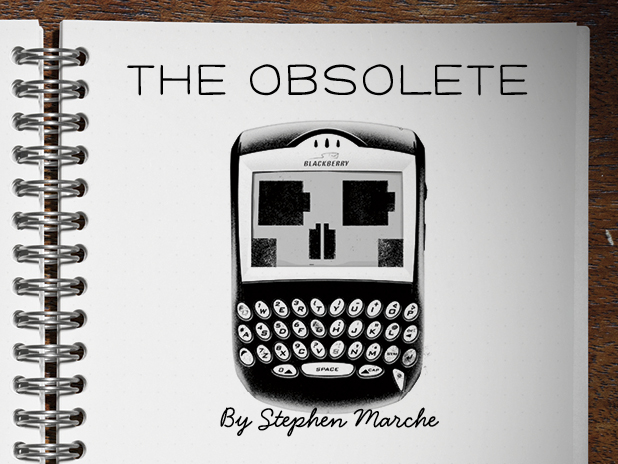We all have one. A story we tell, over and over, that always gets better—exaggerated, embellished, fleshed out—with a beer or two, and with every successive tipsy retelling. It’s not a long story, or even a true one. Does it have a moral? Not always. Is it fun? Yes, always. The barstool story is a literary genre in and of itself—or at least it should be. That’s why we bought beer for five of our favourite Canadian writers and had them jot down their own. So grab a cold one, grab a stool and enjoy.
***
When the dead called, they called on the BlackBerry Quark only. Not any other brand of phone and not any other model. Not the Mobitex or any of the early two-ways. Not the later 7000 series with the medium pixel colored screens, or the Charm or the Electron or the Pearl. Not the Curve, the Bold, the Storm, the Tour, the Style or the Torch. Only the Quark 6200s, released in 2003, with their 160 by 100 pixel monochrome 2.6 inch screens, the 32-bit ARM 7EJ-S Core CPUs, weighing 136 grams.
By 2015, there were only a few Quark users left. The first call came into a 50-year-old Argentine named Miguel Tannero, a dealer in hides. Tannero claimed that he had spoken with his four-year old daughter who had died twelve years earlier when a glazier dropped a pane of glass into the street. Shortly after, a Nigerian car salesman and a banker’s widow in Singapore reported conversations with, respectively, a pneumonia-ravaged second wife and a suicide mother.
A blogger at GigaOm noticed the pattern and ran with “Is BlackBerry driving its users insane?” After reading the post, a twenty-three year old Queens web designer recharged the battery in the 6280 she had kept from her childhood and spoke with her Japanese-Canadian grandfather who had died in an internment camp in British Columbia sixty-five years before. She posted the recording under the heading “the phone call that explained everything.” The post achieved virality.
Everyone who ever owned a Quark rummaged in the tangled corners where obsolete phones collect, in piles in kitchen counters and in office closets and in attic boxes. Eventually 17,943 Quarks were recovered. The original owners all received calls from their dead people. RIM rushed replicas of the 6200s to market but the new 6200s never rang, and over five hundred thousand had to be buried in an abandoned salt mine in Chanqing province.
RIM made new batteries for the old phones, which worked and which sold, but the price they initially charged—$268.47—led to accusations of gouging. Eventually they lowered the price to 49.99. Their profits were marginal.
Soon the obsolete phones were used up. Collections of the conversations were posted online, and a few read them, and a few studied them. The calls had been made. The iWatch came out and everybody forgot.
All that remained was the shiver in the remnants, the five hundred thousand new 6200s in the abandoned salt mines in China, the others returned to the wiry tangles of the forgotten corners. They sat there waiting.




